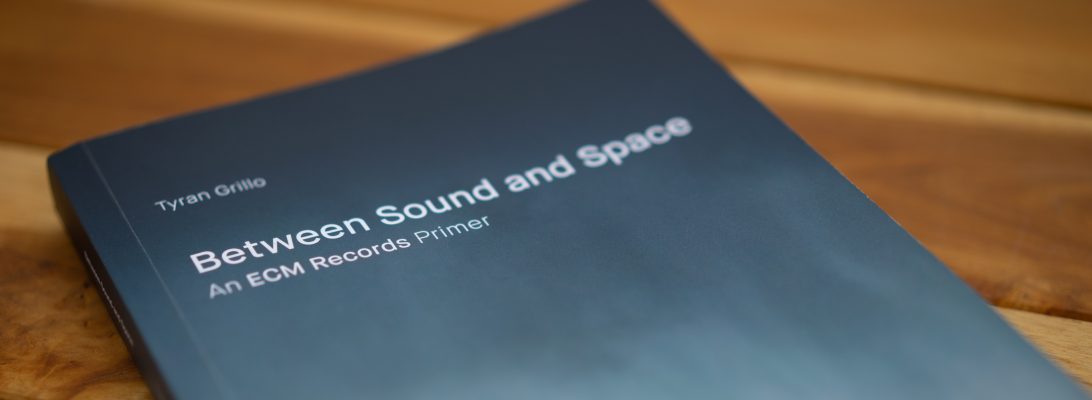Mette Henriette saxophone
Johan Lindvall piano
Katrine Schiøtt violoncello
Henrik Nørstebø trombone
Eivind Lønning trumpet
Sara Övinge violin
Karin Hellqvist violin
Odd Hannisdal violin
Bendik Bjørnstad Foss viola
Ingvild Nesdal Sandnes violoncello
Andreas Rokseth bandoneón
Per Zanussi double bass
Per Oddvar Johansen drums, saw
Recorded 2013-2014 at Rainbow Studio, Oslo
Engineer: Jan Erik Kongshaug
Mixed November 2014 in Oslo by Manfred Eicher, Mette Henriette and Jan Erik Kongshaug
Produced by Manfred Eicher
U.S. release date: November 20, 2015
Norwegian saxophonist and composer Mette Henriette Martedatter Rølvåg enters the ECM universe with a self-titled album of doublings. First, as a two-disc affair, it is among the most formidable debuts for the label in recent years. Second, it is a union of contrasts, balancing composition and improvisation, declaration and whisper, with a straightforwardness that is Mette’s métier. Moreover, the album is a chain of coupled voices, as instruments converge and diverge in an alternating chain of what she calls “elongations” and “miniaturizations.”
Although the trumpet was Mette’s first instrument, in an interview for this album’s press release, she waxes fatefully about her switch to saxophone: “I knew that this was what I’m meant to do. […] I have to tell my stories, and early on I had a feeling of how I was going to do that. […] Soon I would also enjoy disappearing into the theoretical aspects of music but at the beginning it was something more primitive, a response to an inner urge.” For demonstration of this autobiographical concept, we need listen no further than the first disc, simply titled o. Featuring a trio comprised of Mette on saxophone, Johan Lindvall on piano (and who also contributes original compositions), and Katrine Schiøtt on cello, it is a veritable chess board of thematic impulses.
Immediately noticeable is the crackle of Mette’s saliva across the reed, which gives the saxophone textural authenticity as an apparatus of musical translations. In that technique is proven not only Mette’s patience in letting notes awaken, but also the personal associations imbuing those notes with meaning. The nocturnal calls of “.oOo.,” for instance, are meant to evoke the call of an owl (one of the first sounds she remembers hearing), while the breathiness of “3 – 4 – 5” conveys a menagerie of emotions so tender they cannot be broken. By the time we encounter the first full-throated notes of “all ears,” the listener has been primed with a fullness of register and physicality comparable to Mette’s own.
The logic of her sound is that such shorter pieces feel the most expansive while the longer ones feel compressed and circular. In either case, one feels this music growing in real time, as if every cell of its body were genetically acquired.
Despite knee-jerk comparisons to other free jazz greats such as Evan Parker, Mette had no such musicians in mind when developing her musical language. Her primary inspirations are more nature than nurture, as made clear in the second disc, given the enigmatic title Ø. Here we have a “sinfonietta” for which the trio is absorbed into a 13-piece band that includes drummer Per Oddvar Johansen (of the Christian Wallumrød Ensemble) and the Cikada String Quartet. Individual track titles are even more suggestive of their composer’s inner life, a storybook dusted off from attic storage and rebound through interpretation.
The addition of musicians enhances intimacy tenfold. The wind-through-leaves snare of “passé” makes for a fitting introduction, and bassist Per Zanussi adds a deeper element to this chemical mixture as strings produce a crispier layer of shine. All of this elicits a grittier side in Mette’s playing. The Cikadas lend a cinematic touch to occasional interludes, as painterly as their titles (“veils ever after” being a quintessential example). The build of “wildheart” from whisper to shout is a highlight of this disc, as are the relatively aggressive turns of “late à la carte.” As with the first, however, some of the most compelling tracks are the shortest, like the one-minute blush of piano and strings that is “this will pass too.” And if “off the beat” is the most urban tune, then “wind on rocks” is an atmospheric free dive into the wilderness.
Mette Henriette is a story written in lowercase, whose genesis is one for the pages of ECM lore: “One Saturday night in Oslo I saw a poster for Dino Saluzzi at the Cosmopolite. I thought: I should hear this, especially because I’m also writing for bandoneon in my ensemble. When is the gig? Oh, it’s today. When does it start? In twenty minutes! OK! So it was a very quick walk to Cosmopolite. It was packed, but I found a place on the stairs, and by chance I was next to where Manfred Eicher was sitting. We spoke in the interval and I told him about my project. He had been recording at Rainbow, and listened to some of my music.”
And now, we too can join hands with fate in listening to this constellation appear from first star to last.



